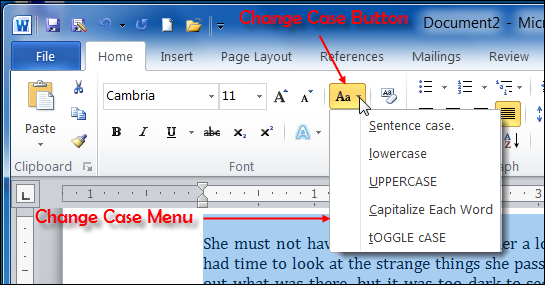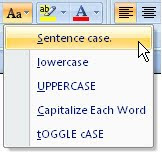

In addition, this menu contains help options, such as repairing Microsoft Office, finding your product serial number, managing installed add-ins, and changing security settings. You can set preferences for AutoCorrect, printing, saving, custom dictionaries, color schemes, updating fields, and much more. It includes more than 100 modifiable options, not including submenus. Change settings as desired, then click OK.Click the Office Button (or File in Word 2010 or 2013).This word is assumed to be the first word of a phrase or sentence, which should always start with an uppercase character.To change user and software application preferences, follow these general steps: Note, as well, that the comparison portion of the macro doesn't pay attention to the first word in the text selection. (The spaces are included so that there are no mistakes in word matching, for instance matching "he" to a part of "the".) When the sTest comparison is done, sTest contains a leading and trailing space so that successful matches can be made. These words are surrounded by spaces-including the first and last words of the string. This string contains a list of words that you want to always appear in lowercase. The key to the macro is the lclist string.

If there is, then the word in the original text is converted to lowercase. The contents of sTest are then checked against the lclist string to see if there is a match. Each word is extracted and placed in the sTest variable, which then is converted to lowercase. It then steps through the words in the selection (Word makes the words available in the Words collection), examining each one. When you select some text and run this macro, the first thing it does is to change the text to Word's standard title case. ' list of lowercase words, surrounded by spacesįor wrd = 2 To The macro can be programmed so that it ignores a specific set of words while doing its work. You can create a macro to intelligently apply title case to a text selection. For instance, if you select the text "this is a test" and then use the Change Case dialog box to change the text to title case, you end up with "This Is A Test." Common rules of capitalization, however, would dictate that the "short" words ("is" and "a") should not be capitalized. The only problem with this is that Word is rather indiscriminate in what it capitalizes. This type of change results in each word of the selected text being uppercase, while the rest of the letters are in lowercase.

One of the most common case changes is title case. You'll see a list of different ways in which Word can adjust the case of your text. If you are using Word 2007 or a later version you can make sure the Home tab of the ribbon is displayed and then clicking the Change Case tool (Aa) in the Font group. Word allows you to adjust the case of selected text.


 0 kommentar(er)
0 kommentar(er)
